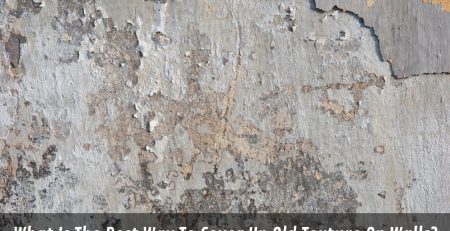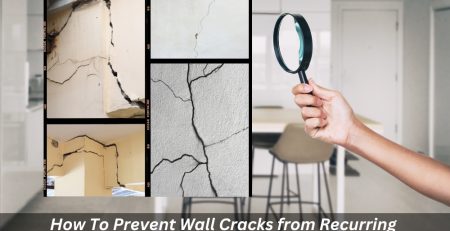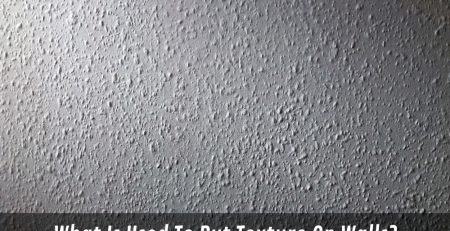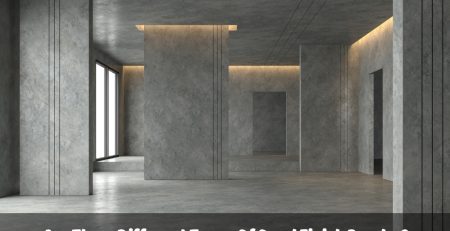Why Does Efflorescence Occur On Cement Rendering?
Efflorescence is a common phenomenon that plagues cement rendering, but what exactly is it, and why does it matter? In this article, we’ll dive into the world of efflorescence, exploring its causes, signs, prevention, and removal. By the end, you’ll have a clear understanding of this issue and how to deal with it effectively.
What is efflorescence and why does it matter?
Efflorescence is the unsightly white, chalky deposit that often appears on the surface of cement rendering. It may not be a structural concern, but it can certainly be a visual nuisance. Efflorescence is caused by the migration of soluble salts from within the cement to the surface, where they react with carbon dioxide from the air and water. This reaction forms insoluble calcium carbonate, which gives efflorescence its distinctive appearance.
Efflorescence matters for several reasons:
- Aesthetics: Efflorescence can make your cement rendering look unattractive and detract from its overall appearance. It can take away from the desired aesthetic quality of your building or structure.
- Longevity: While efflorescence itself doesn’t typically harm the structural integrity of your rendering, it can be indicative of underlying moisture issues. Prolonged exposure to moisture can lead to other, more serious problems, such as spalling and cracking.
- Property value: If you’re planning to sell your property, efflorescence can negatively impact its value. Potential buyers may be concerned about the structural implications and the cost of remediation.
What causes efflorescence on cement rendering?
Efflorescence is a complex phenomenon, and multiple factors can contribute to its occurrence. Understanding these causes is essential for effectively dealing with efflorescence.
- Soluble salts in cement: Cement contains various soluble salts, such as calcium, magnesium, and sodium. When water comes into contact with the cement, it dissolves these salts, creating a solution that can migrate to the surface.
- Moisture: The presence of moisture is a fundamental requirement for efflorescence to occur. Rain, groundwater, or even high humidity levels can provide the necessary moisture.
- Temperature fluctuations: Temperature changes can trigger the crystallisation process. As the moisture evaporates from the surface of the rendering, it leaves the salt deposits behind, forming the characteristic efflorescence.
- Water quality: The quality of the water used during construction can also impact efflorescence. Hard water, which contains higher mineral concentrations, is more likely to lead to efflorescence compared to soft water.
- Improper mixing and curing: Inadequate mixing of the cement or improper curing techniques can exacerbate efflorescence. It’s essential to follow recommended practices during construction.
What are the signs of efflorescence on cement rendering?
Recognising efflorescence in your cement rendering is crucial for promptly addressing it. Here are some common signs to watch for:
- White streaks or deposits: The most obvious sign is the presence of white, chalky streaks or deposits on the surface of the rendering. These deposits can vary in size and intensity.
- Blistering or bubbling: In some cases, efflorescence may cause the paint or coating on the rendering to blister or bubble. This is often a result of trapped moisture and salt beneath the surface.
- Texture changes: Efflorescence can alter the texture of the rendering, making it rough or gritty to the touch.
- Colour changes: The appearance of your rendering may change as efflorescence progresses, with colours becoming faded or bleached.
- Recurring appearance: If efflorescence continues to reappear after cleaning, it’s a sign of an underlying issue that needs to be addressed.
- Cracking or spalling: In more severe cases, efflorescence can be a precursor to structural damage like cracking and spalling, which should not be ignored.
To enhance the aesthetic appeal of your home while protecting it from the elements, consider installing a custom walk in shower screen. A well-designed shower screen can complement your existing cement rendering and add a touch of modern elegance to your bathroom.
Can efflorescence be prevented entirely?
Preventing efflorescence entirely can be challenging, but there are steps you can take to minimise its occurrence:
- Proper mixing and curing: Ensure that the cement is adequately mixed, and follow proper curing procedures during construction. This can help reduce the chances of efflorescence.
- Use clean water: Use clean, low-mineral content water for mixing cement. Avoid water that contains high levels of dissolved salts.
- Good drainage: Proper drainage systems around your structure can help prevent moisture from accumulating and coming into contact with the cement rendering.
- Seal the surface: Applying a high-quality sealer to the rendering can create a barrier that helps keep moisture and soluble salts from migrating to the surface.
- Choose quality materials: Opt for quality cement and other materials that are less likely to contain high levels of soluble salts.
- Control moisture: If possible, keep the cement rendering dry during and after construction to minimise efflorescence risk.
While complete prevention may not always be achievable, taking these precautions can significantly reduce the likelihood of efflorescence on your cement rendering.
How to Remove Efflorescence from Cement Rendering
If you’re already dealing with efflorescence on your cement rendering, it’s essential to address it promptly. Here’s how to remove efflorescence effectively:
- Brush or scrub: Begin by gently brushing or scrubbing the affected area to remove loose efflorescence. Use a stiff nylon brush or a natural-bristle brush, avoiding wire brushes that could scratch the surface.
- Rinse with water: After brushing, rinse the area with clean water. This will help remove the remaining efflorescence residue.
- Chemical cleaners: In some cases, you may need to use a chemical cleaner specifically designed to dissolve efflorescence. Follow the manufacturer’s instructions carefully, and always wear protective gear, such as gloves and goggles, when handling chemicals.
- Pressure washing: If the efflorescence is stubborn and widespread, you can consider using a pressure washer. Use a low-pressure setting to avoid damaging the rendering.
- Re-seal: Once the efflorescence is removed, consider re-sealing the rendering to prevent future occurrences. Choose a high-quality sealer and apply it according to the manufacturer’s recommendations.
- Monitor moisture: Regularly monitor the moisture levels around your rendering and address any drainage or water intrusion issues promptly to prevent efflorescence from reoccurring.
- Professional help: If efflorescence persists despite your best efforts, it may be time to consult a professional contractor or mason who can identify and address underlying issues.
Conclusion
Efflorescence on cement rendering is a common issue, but understanding its causes, signs, and prevention measures can help you effectively deal with it. While complete prevention may be challenging, taking steps to minimise its occurrence and promptly addressing efflorescence when it appears will help maintain the aesthetic appeal and structural integrity of your building or structure. Remember that when in doubt, it’s always a good idea to seek professional guidance to ensure the best possible outcome for your cement rendering.
If you’re dealing with the pesky issue of efflorescence on your cement rendering in Sydney, look no further than Jims Rendering Sydney for professional and reliable assistance. With our team of experienced professionals, we understand the intricacies of efflorescence and how to effectively remove it from your cement rendering. Our comprehensive approach, coupled with top-notch customer service, ensures that your property not only regains its aesthetic appeal but also maintains its structural integrity. Don’t let efflorescence mar the beauty of your property any longer—reach out to Jims Rendering Sydney today for a thorough and lasting solution.











